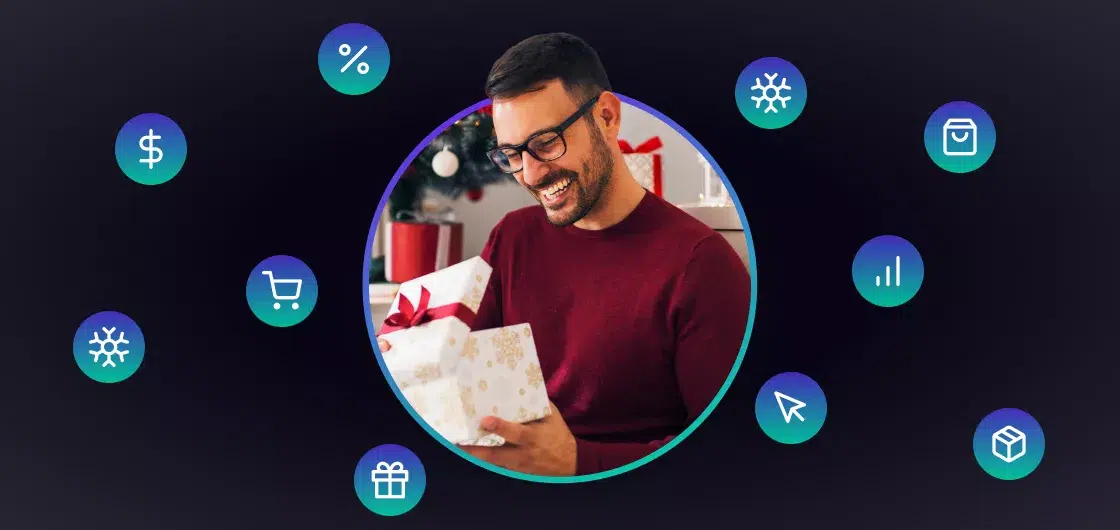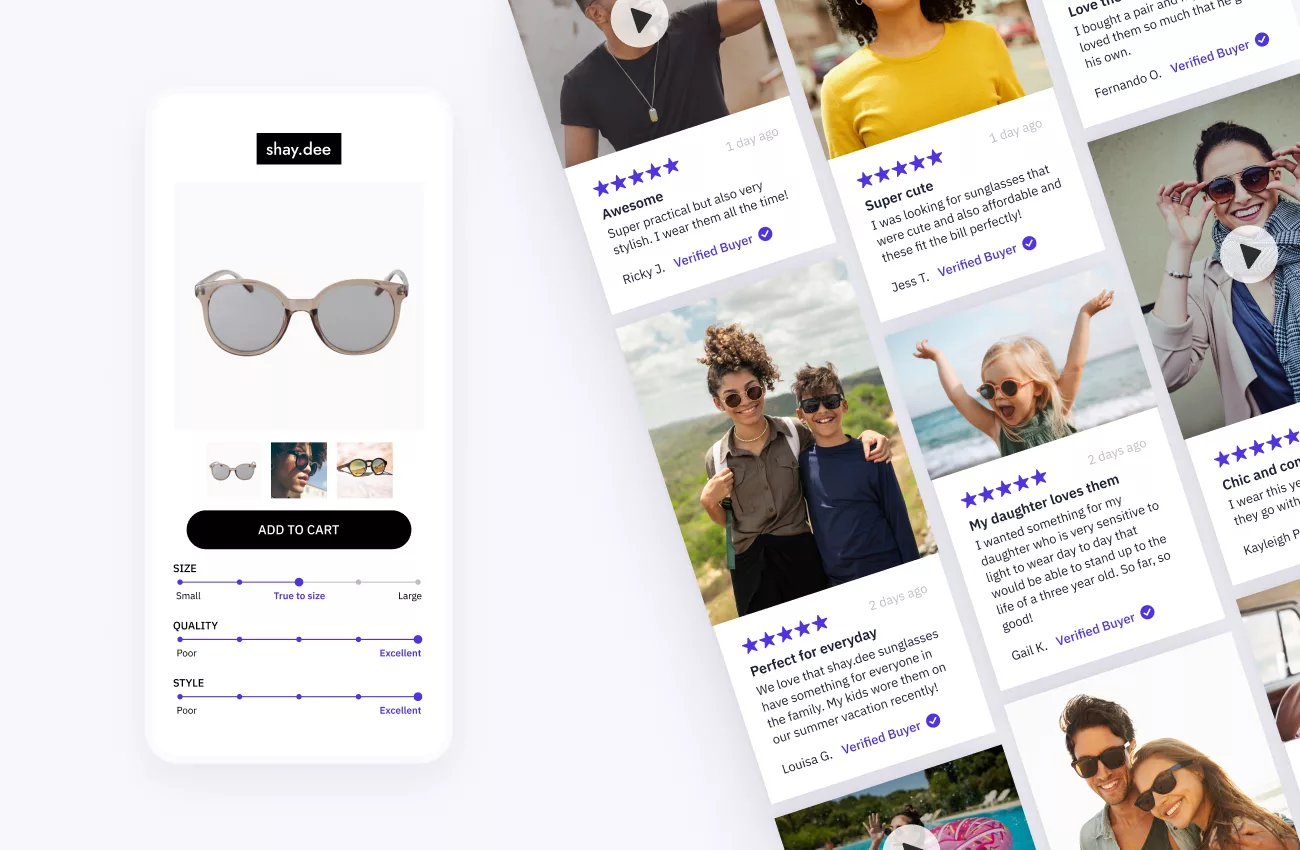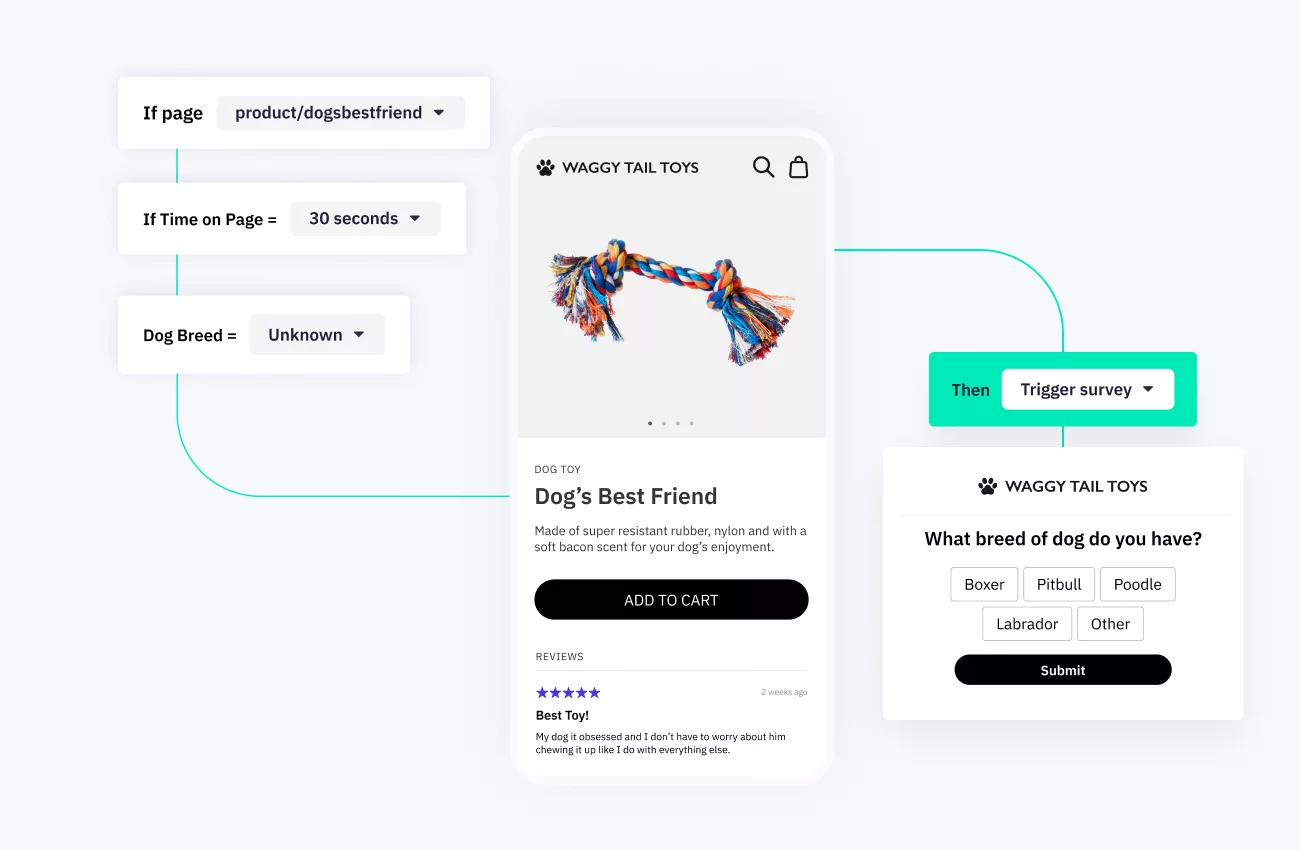
- Ecommerce Marketing
- Integration
- Partners
- Product
Supercharge Customer Engagement with Okendo & Klaviyo
Guest Author | Apr 21, 2025
Aug 4, 2023 | 11 minute read

Lindsay Kolinsky
Director of Marketing
Note: This article was originally published in 2022 as part of a series and has been updated.
It comes around fast. Ecommerce brands are once again preparing for their busiest time of the year and consumers’ favorite weekend for eye-popping deals: Black Friday and Cyber Monday.
While every holiday shopping season gives brands a chance to boost their bottom lines, this one is poised to be especially opportunistic as consumers’ careful spending habits spring the need for ultra-enticing deals. In fact, forecasts predict a similar increase in 2023 holiday sales compared to last year, despite recent Okendo research on loyalty and retention finding 8-in-10 consumers are currently cutting their spending. This suggests that, in light of the unpredictable economy, shoppers will be on the hunt for bigger sales and expecting brands to give them a bigger bang for their buck.
However, against a backdrop of shifting consumer needs, expectations, and increasingly fierce competition, brands must have the proper strategy in place to optimize the opportunity that lies ahead. With that in mind, here’s what ecommerce brands need to do to ensure that this BFCM is a successful ringing-in for not only the busiest but also the most wonderful time of the year.
When it comes to BFCM it’s always a good idea to start early. When we surveyed consumers before the holiday season last year, we found that 48% of consumers in the U.S. planned to start their holiday shopping earlier than they typically would. Given their more stringent spending habits in 2023, we expect this trend to continue, so you’ll want to make sure you have things locked and loaded well before BFCM in order to capitalize on the activity.
Your plan should include key factors such as:
Crucial to putting this plan together is taking stock of last year’s BFCM strategy. As Casey Roeder, Founder and CEO of the advertising agency SKYLAB, puts it, “For those who have been around the block, learning from your previous BFCM sales will allow you to predict and forecast.”
Casey adds: “Look at things like which products and deals performed well and which didn’t, which types of customers responded to your deals the most, and where most of your traffic came from.”
The more you can prepare before the big weekend the better. This includes growing your email lists ahead of time to maximize your BFCM campaign effectiveness. Matt Fier, Head of Retention at QDL Agency recommends, “Brands should use existing channels, like email, to drive SMS sign-ups for exclusive BFCM deals, early access to sales, etc.”
He adds: “Starting early and building a sense of “FOMO” and urgency will ensure your campaigns will reach a wider audience during Cyber week.”
Indeed, BFCM is all about urgency and FOMO. As Melissa Knowlton, Head of Paid Search & Video Advertising at Exclusive Concepts notes, “With holiday shopping now starting right after Labor Day weekend, we recommend brands start building awareness through video, display, and discovery campaigns prior to the peak holiday season. Don’t be shy about pushing your brand and holiday deals now to build momentum.”
As with any effective campaign, learning from the past and using that to inform current plans is absolutely crucial this holiday season.
Ecommerce and DTC sellers should start with the basics when it comes to making sure they have the necessary pieces in place to drive customers and conversions. Naturally, the first place to start is your digital storefront.
As Charlotte Davies, Marketing Manager at Shopify Agency, Velstar says, “Brands must ensure their site is super fast and optimized to manage high peaks in traffic. BFCM is renowned for driving high surges of traffic to stores, which can lead to slow loading speeds and, in worst cases, your site to crash, resulting in significant downtime.”
She adds: “On top of that, customer expectations have never been higher and users expect pages to load in two seconds or less, or they’ll bounce – most likely to your competitors.”
To speed up your store, there are a few things brands can do, including removing excess apps and optimizing site images. Also, when making any changes to your store, it’s recommended that brands conduct continuous testing to ensure performance hasn’t been compromised.
To be super safe and ensure you don’t have any site issues on the big day, Carolyn Lowe, CEO & Founder of ROI Swift, recommends, “Brands should consider going on major code change lockdowns by mid-November. Changing promos and headers and minor things are ok, but don’t change your product detail pages and other key pages before the big day.”
And with 67% of all ecommerce sales in 2021 originating from mobile devices, brands must ensure their store is optimized for shopping on the go. Simply put, if your efforts aren’t optimized for mobile users, you could be missing out on a massive block of potential customers.
“It’s also a good practice to check on navigation – both on desktop and mobile to make sure popular categories are sorted toward the top of the list on mobile and easy to find,” says Antonella Pisani, CEO, Eyeful Media. “Checking null searches and popular searches by a device may also provide some inspiration. Remember to test for usability on mobile, tablet, and desktop across operating systems for a well-rounded perspective.”
Lastly, against a backdrop of persistent supply chain challenges, it’s more important than ever to make sure you have enough products to meet demand.
Waldo van Niekerk, Senior Digital Strategist at Zyber Limited recommends to brands that “It may seem obvious, but having sufficient stock on hand is imperative. Look at last year’s inventory data results to predict sales for this year to avoid missed opportunities and customer disappointment.”
While having a working tech stack may seem like table stakes, it’s not always as straightforward as you might think. In fact, a recent Klaviyo survey found that only 2% of ecommerce executives are pleased with their current tech stack.
The truth is an ecommerce tech stack can make or break a business. But with more than 10,000 martech vendors on the market, this overabundance of tools and solutions can lead to brands having clunky and expensive systems that provide more challenges than solutions.
Leading up to BFCM it’s crucial for brands to make sure they have the right tech stack in place and plug any gaps that might exist. A particularly important area to consider is having the right reviews platform in place. 97% of consumers look for reviews at least some of the time before making a purchase, with more than a third of shoppers (34%) looking for reviews before they make a purchase every time.
“Even during busy periods like BFCM, customers still want a deep understanding of a product and how it fits into their lives, including quality, fit, and feel,” says Charlotte Davies. “This is why it’s important that before the big weekend you integrate a reviews platform that allows you to capture customer testimonials and display these on your product pages.”
And as Charlotte explains, taking reviews a step further can help customers make more informed purchase decisions.
“Ahead of BFCM, start incentivizing your customers to share photos of themselves with their product purchases, so by the time Black Friday comes around, you’ll have lots of reviews to feature across your store, ready to empower shoppers to buy from you.”

87% of consumers say that UGC included in product reviews improves their value in informing their purchase decision, with 42% saying it improves value “significantly.” Rachel Tyers, Okendo’s SVP of Strategic Partnerships, notes “This is where having an innovation forward reviews platform that seamlessly integrates with the rest of your tech stack becomes crucial.”
In the weeks leading up to BFCM, many other brands will be competing for your customers’ attention. So the faster you can build trust and confidence, the better. Besides dynamic reviews that provide powerful social proof, there’s another element that can be extremely effective when it comes to building confidence and driving conversions: personalization.
There’s no doubt that BFCM presents an enormous amount of opportunity for ecommerce brands. But the truth is the window to capitalize on that opportunity is small. As such, brands must ensure they have a tightly crafted marketing strategy ready to go well before the big weekend.
“For any campaign, but especially ones as big as BFCM, it’s critical to have foundational pieces of ecommerce marketing dialed in ahead of time,” says Charles Drengberg, Managing Director at Big Presence.
This starts with having clear messaging that is highly personalized. 79% of consumers say that personalized brand experiences in the form of product recommendations, relevant offers, and personalized communication are important components of their shopping experience.
“Personalization might just be the key to winning Black Friday and Cyber Monday,” says Arjun Jolly COO and Co-Founder of adQuadrant. “Customers expect personalized marketing experiences and brands that can leverage their data to create those experiences will succeed this BFCM and beyond.”
There’s a particular type of data that can provide brands with actionable insights that will allow them to provide hyper-personalized experiences: zero-party data. With changes to how brands can access and use third-party data and an increasing desire for privacy, zero-party data that customers willingly give to brands has become increasingly important. And as with any kind of data collection, there are things you need to know in order to optimize your ability to gather it and put it into action.
Rachel Tyers says, “One of the best ways to collect zero-party data is through micro-surveys triggered by specific shopper actions or characteristics like the type that Okendo Surveys offers. Shoppers today are looking for effortless experiences and micro-surveys allow you to meet customers at points of high engagement with hyper-relevant questionnaires that will drive maximum response rates.”

Erin Lopez, Growth Strategist at Ivy Co. Studio, recommends, “Once you have collected zero-party data and first-data from other sources such as Shopify purchases, ESP engagement metrics, identify the key audience segments to target during BFCM and create a targeted content marketing calendar for the Holiday season.”
As it’s often the case when it comes to ecommerce marketing, email is going to be one of your most important channels to unleash your personalized marketing strategy during BFCM. Dive deep into your email provider platform.
“List cleaning initiatives and identifying key segments are great BFCM preparations to make sure you have the bases covered for successful campaigns,” says Sara Kappler, Founder and CEO of Centric Squared. “Identifying your key flows and getting ready with A/B variants to switch on so all your outgoing flow emails are sharing your BFCM promotions too will ensure you’re being as consistent and personalized as possible with customer messaging.”
If there was ever a time to get a handle on your paid programs, it’s headed into the holiday season, and specifically before BFCM. With all of your competitors using paid marketing, brands are going to find themselves in fierce competition for clicks. And without the right strategy, that can be an expensive race to win.
Gerard Sullivan, Founder and CEO of Adquench recommends that brands “start launching holiday campaigns and promotions 2-3 weeks prior so you beat the holiday advertiser rush while costs and bids are low!”
Similarly, Jack Paxton, Founder of Top Growth Marketing notes “CPMs are going to increase in Q4 so it’s important to diversify. Running your deals on multiple platforms, collecting leads on a dedicated BFCM landing page a few weeks or months prior. It’s also a good idea to run your deal for at least 7-14 days to get the full benefit of the BFCM and Holiday buying craze.”
With creative fatigue and high ad costs during the holiday season, Greg Gillman, Chief Revenue Officer at MuteSix suggests that “Brands should invest in strong upper-funnel, TikTok style content. TikTok commands lower CPMs than Meta and can be used for acquisition and remarketing.”
He adds: “Plus, this low-lift creative can be repurposed across major media placements such as Youtube Shorts, Instagram Reels, and Facebook.”
With a diversified strategy, brands will want to make sure they have the proper elements in place to track performance in a way that allows them to double down on top-performing channels, dial back on those that aren’t and make adjustments on the fly as needed.
As Charles Drengberg notes, “Properly tracked efforts, using UTM codes across all channels, lead capture opportunities short of purchase conversions in place to catch new visitors who may be shopping around is critical to maximizing BCFM efforts long term, and rock solid abandoned cart flows built for BCFM are all valuable ways to extend the value of your campaigns and capture as many conversions as possible.”
Underscoring the importance of campaign tracking and performance measurement, Rachel Tyers notes, “Adding a post-purchase “how did you hear about us” survey can help brands validate their marketing spend and make real-time adjustments ahead of BFCM and during the rest of the holiday season.”
The countdown to ecommerce’s two biggest holidays has begun, and that means that merchants and their teams need to take the necessary steps to ensure they’re prepared for the upcoming surge in activity. After all, if you’re not ready when shoppers hit their favorite online stores in search of amazing deals and offers, you can bet someone else is.
Related articles
Ready to learn more?